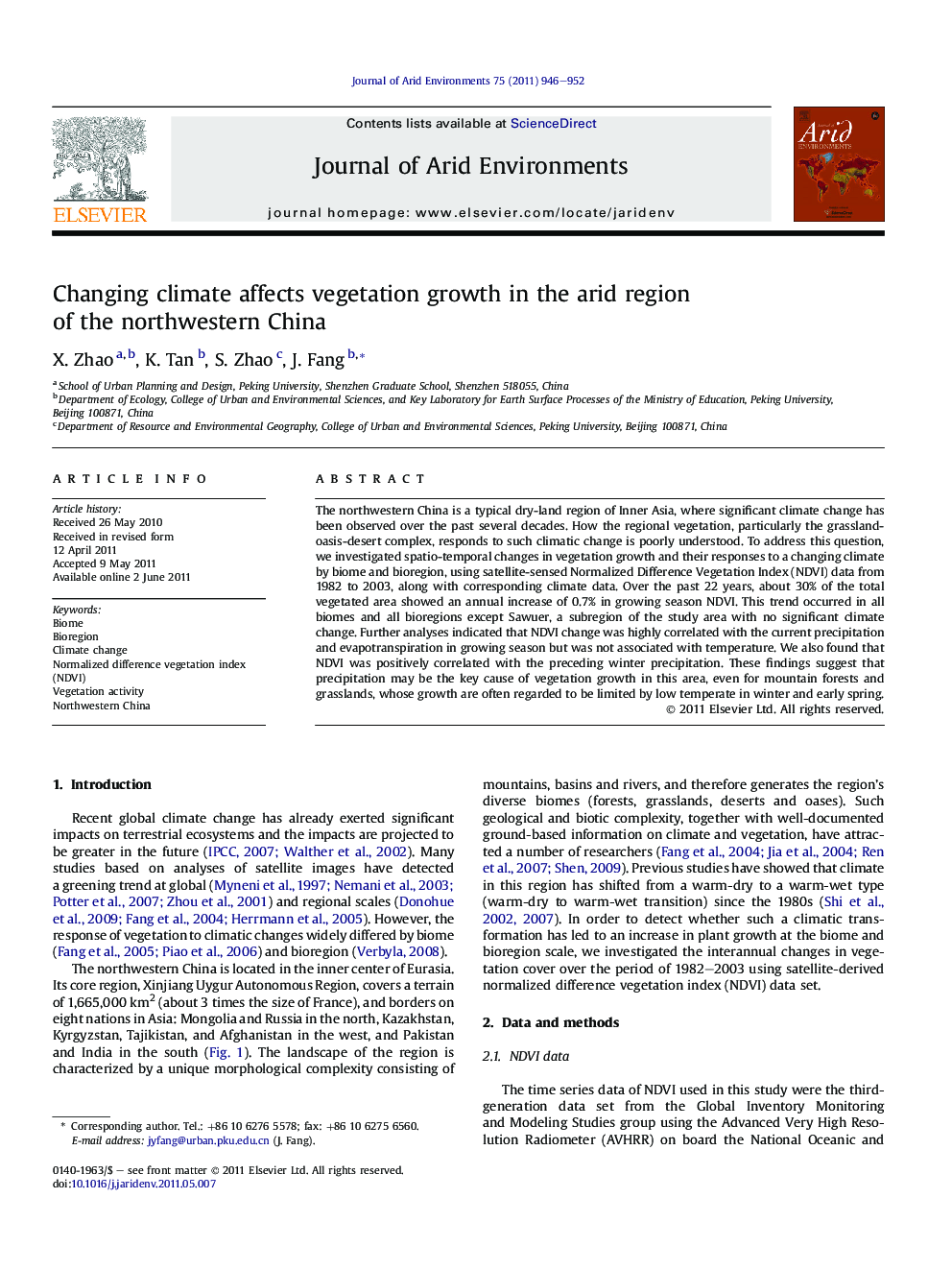| Article ID | Journal | Published Year | Pages | File Type |
|---|---|---|---|---|
| 4393649 | Journal of Arid Environments | 2011 | 7 Pages |
The northwestern China is a typical dry-land region of Inner Asia, where significant climate change has been observed over the past several decades. How the regional vegetation, particularly the grassland-oasis-desert complex, responds to such climatic change is poorly understood. To address this question, we investigated spatio-temporal changes in vegetation growth and their responses to a changing climate by biome and bioregion, using satellite-sensed Normalized Difference Vegetation Index (NDVI) data from 1982 to 2003, along with corresponding climate data. Over the past 22 years, about 30% of the total vegetated area showed an annual increase of 0.7% in growing season NDVI. This trend occurred in all biomes and all bioregions except Sawuer, a subregion of the study area with no significant climate change. Further analyses indicated that NDVI change was highly correlated with the current precipitation and evapotranspiration in growing season but was not associated with temperature. We also found that NDVI was positively correlated with the preceding winter precipitation. These findings suggest that precipitation may be the key cause of vegetation growth in this area, even for mountain forests and grasslands, whose growth are often regarded to be limited by low temperate in winter and early spring.
► We proposed that significant climate change may lead to changes in vegetation growth in arid northwestern China. ► NDVI-indicated vegetation growth shows an overall increase in the whole area, all biomes and most bioregions. ► Precipitation may be the key cause of vegetation growth in this area, even for mountain forests and grasslands.
